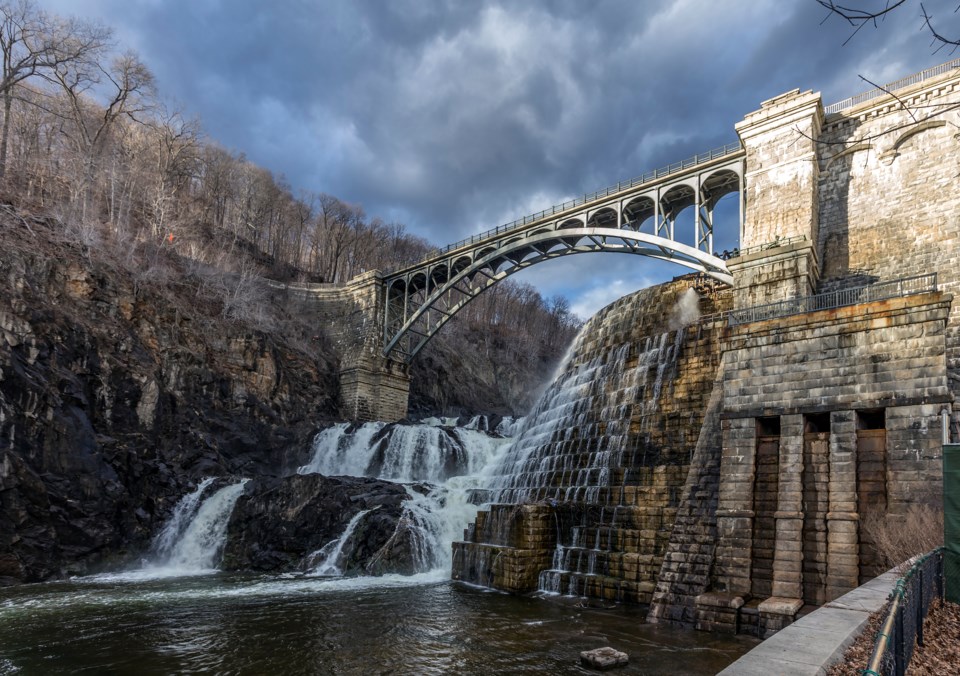New York City Mayor Eric Adams and New York City Department of Environmental Protection (DEP) Commissioner Rohit T. Aggarwala on Monday elevated the citywide water action plan to a drought warning from a drought watch.
In addition, the city paused work on the the final phase of the $2 billion Delaware Aqueduct Repair Project amid a historic and continued precipitation shortage, according to a press release.
“Our city vehicles may look a bit dirtier, and our subways may look a bit dustier, but it’s what we have to do to delay or stave off a more serious drought emergency," Adams said. "We need New Yorkers to continue to save water too, so we can water our parks and fill our pools this coming summer. New Yorkers always look out for each other. We are resilient and we will get through this together.”
The mayor ordered city agencies to implement a range of drought protocols to conserve water and reminded New Yorkers to continue to do their part in saving water wherever possible. Conserving water will slow the depletion rate of the stored water in city reservoirs and can potentially postpone or eliminate the threat of a serious shortage.
The city first issued a drought watch on Nov. 2 and the city has not issued a drought warning since 2002. The next and final water supply action level would be a drought emergency.

“The ongoing and historic lack of rainfall, both in the city and in the upstate watershed where our reservoirs are located, has become more critical,” said Aggarwala. “Our city agencies are leading by example in finding innovative ways to save water every day.
City and state agency water-saving measures include:
- The New York City Department of Sanitation is suspending street flushing activities and reducing vehicle washing.
- The New York City Police Department and Fire Department of the City of New York (FDNY) are assisting in closing illegally opened hydrants and reducing vehicle washing.
- The New York City Department of Parks and Recreation (NYC Parks) is limiting water use for fountains and golf courses and no longer providing make-up water for artificial ponds and lakes unless they are habitats for fish or other wildlife.
- The New York City Housing Authority and New York City Department of Housing Preservation and Development are requesting plumbing leak surveys and appropriate repair work, seeking to install low-flow plumbing fixtures wherever possible and restricting lawn watering.
- New York City Public Schools is initiating water conservation awareness programming for students.
- The New York City Department of City Administrative Services (DCAS) is conducting leak survey and leak repair activities where necessary at city facilities and is no longer washing the exteriors of city buildings.
- The New York City Department of Health and Mental Hygiene (DOHMH) is communicating with food service establishments about reductions of water use.
- The Metropolitan Transportation Authority is reducing fleet washing.
The mayor asked all New Yorkers to pitch in to conserve water. Some tips include:
- Report open fire hydrants and street leaks to 311. An open hydrant can release more than 1,000 gallons per minute, which wastes 1.4 million gallons of drinking water in a 24-hour cycle.
- Don't flush the toilet unnecessarily. According to the U.S. Environmental Protection Agency (EPA), toilets are by far the main source of water use in a home, accounting for nearly 30 percent of an average home's indoor water consumption. Each flush can use 1.6 gallons, with older models using as much as 6 gallons.
- Take shorter showers, saving five to seven gallons a minute. When taking a bath, fill the tub only halfway and save 10 to 15 gallons.
- Don't run the tap while shaving, washing hands, or brushing teeth. Faucets use two to three gallons per minute.
- Fix leaks. A leaky faucet that drips at the rate of one drip per second can waste more than 3,000 gallons per year, according to the EPA.
- Run the dishwasher and washing machine only when full. Use short cycles if available. Turn off the water while washing dishes.
- Install water-saving fixtures, including low-flow toilets and showerheads, as well as faucet aerators.
- Sweep driveways and sidewalks clean rather than washing them down with a hose.
- For even more ideas, visit DEP's Water Savings Tips website.
On a whole, the city has used less water despite its population growth. The city’s average daily water demand has decreased by approximately 35% over the past several decades, even as the city’s population has grown by more than 1 million people. During its peak, in 1979, the city’s average water usage was 1.5 billion gallons of water a day. Thanks to improved management strategies — systemwide leak detection and repairs, replacing old meters with automated meter readers, and providing an online platform for customers to track and monitor water usage and quickly detect leaks in their buildings — the city now uses just 1.1 billion gallons a day on average, and under 1 billion gallons during the winter months.




